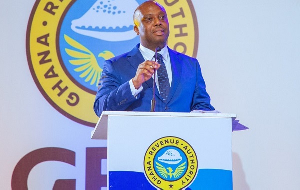Copyright Forbes

When your company changes benefit offerings or when regulators issue new guidance, there are steps the HR team must take to keep everything aligned and on track—from eligibility rules to communication templates. To provide guidance on these steps, Forbes Human Resources Council members offer their tried and true practices for leaders who want to ensure their health and welfare benefit plans remain fully compliant, even as legal and regulatory environments evolve. 1. Proactively Build Predictive Compliance The best practice is to move beyond routine policy updates and build predictive compliance. HR should track upcoming legal and regulatory trends, assess their impact on benefit costs and employee coverage and adjust plans in advance. This turns compliance from a reactive task into a proactive, well-governed process. - Subhash Chandar, ESOM Holding 2. Keep Educating Yourself Compliance rules are ever-changing on both the federal and state levels. My advice for HR teams is to stay educated and informed, but don't be overwhelmed. The complexity of compliance makes it imperative to lean on experts and learn how to handle the ever-evolving health and welfare benefits landscape. - Beth Latchana, Lockton Companies 3. Treat The Process As A Blend Of Structure And Agility Compliance excellence comes from discipline, documentation and dialogue. It's a blend of structure and agility that enables HR to anticipate—not just react to—change. In today’s environment, that readiness is the true mark of a mature HR function. - Britton Bloch, Navy Federal Forbes Human Resources Council is an invitation-only organization for HR executives across all industries. Do I qualify? 4. Watch How Other Employers Are Doing It HR teams can stay compliant by mirroring how top Detroit employers partner with local benefits consultants, track state insurance mandates and review plans quarterly. This proactive Detroit-based approach prevents compliance gaps and ensures employee benefits remain affordable and lawful. - CJ Eason, JobFairGiant.com 5. Network With Partners The best practice for HR is to take a proactive approach, partnering with legal, finance and benefits providers to stay ahead of regulatory changes. By regularly reviewing policies, monitoring legislation and communicating updates clearly, HR ensures compliance while staying informed. This collaborative approach reduces risk and positions HR as a strategic, trusted partner with employee well-being. - Sherry Martin 6. Integrate Long-Term Risk Management Strategies Compliance isn’t a reactive process; it’s a design problem. The best HR teams integrate regulatory foresight into benefits architecture and align legal, finance and operations. Then they simulate impact before rules land. By making compliance measurable, auditable and anticipatory, HR transforms risk management into a strategic capability that protects employees and preserves organizational agility. - Katrina Jones 7. Build Trust By Sharing Your 'Why' Top teams go beyond checklists—they anticipate change. They practice regulatory intelligence, tracking trends before laws take effect. Using AI tools, they model “what-if” scenarios to predict the compliance impact. They make compliance a shared, cross-functional responsibility tied to DEI and culture. Most importantly, they communicate the "why," turning compliance into trust and strategic foresight. - Sheena Minhas, ST Microelectronics 8. Avoid Treating Compliance As A One-Time Task The best practice is to stay proactive rather than reactive. HR leaders should build partnerships with trusted legal and benefits advisors, monitor regulatory updates and audit plans regularly. Compliance is not a one-time task but an ongoing discipline that protects both the organization and its people. - Nicole Cable, Blue Zones Health 9. Train Your Workforce And Foster Open Communication



